Yesterday (Saturday May 12, 2012), I found a bunch of Colorado potato beetle grubs (also called as larvae) were feeding on all of my four potato plants (Photo 1) that I had planted in December of 2011. This is the first time I have planted potatoes in my organic garden but did not expect that they will be attacked by Colorado potato beetles or any other insect pests.
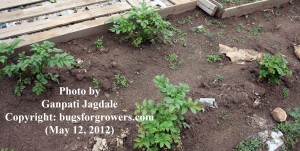
I found that all the different stages of Colorado potato beetle grubs feeding at the same time on the potato leaves (Photo 2) but I did not come across the presence of their adult stages on plants. This means that these grubs are not from a same generation but they were from several different generations of beetles.
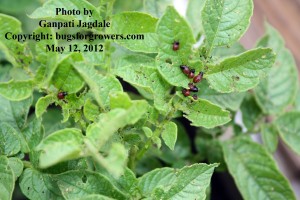
I saw that all the stages of grubs were voraciously feeding (I wish, I had a video to record feeding) on the leaves as seen in photo number 3 these grubs have completely skeletonized the potato leaves.
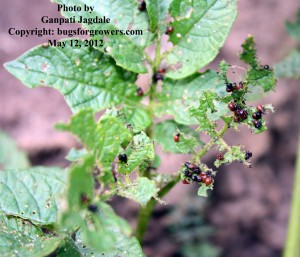
I have collected almost all the mixed stages of grubs of Colorado potato beetle with my hand from my all potato plants in a container (photo 4).
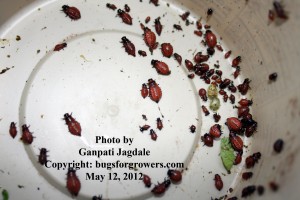
I am going to expose these collected larvae of Colorado potato beetle to an entomopathogenic nematode, Steinernema carpocapsae. In my next blog post, I will share results of efficacy of Steinernema carpocapsae against these Colorado potato beetle larvae.
I also noticed several masses of yellow colored eggs laid by Colorado potato beetles on the under side of several different potato leaves (Photo 5).
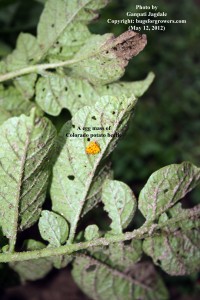
This means when these eggs will hatch there will be a heavy infestation of Colorado potato beetles on my potato plants. Therefore, to reduce future infestation of Colorado potato beetles I need to destroy all the egg masses on the leaves. I have destroyed the eggs by plucking the leaves with eggs and crushed them. This type of mechanical control of Colorado potato beetle is possible because I have only four potato plants in my garden. However, if you have large acreage of potato crop then you cannot destroy eggs this way but you have to let grubs hatch from eggs and then use any chemical pesticides or biological control agents such as entomopathogenic nematodes to manage a high population of hatched larvae Colorado potato beetles.
